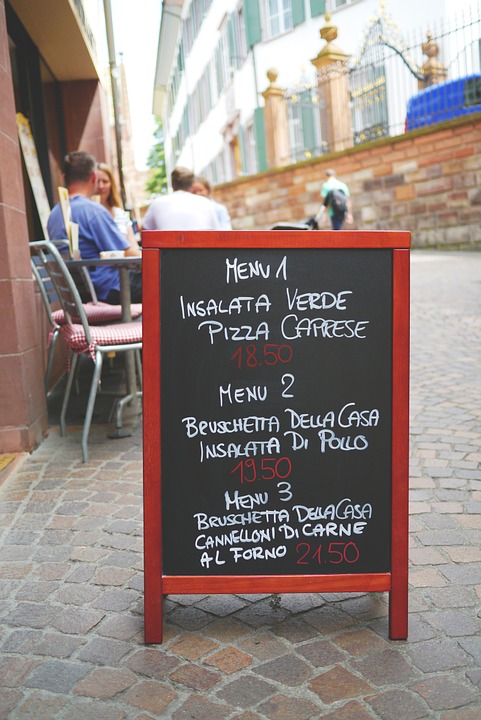Key Difference – A la Carte vs Table d’ Hôte
A la carte and table d’ hôte are two common terms found in restaurant terminology. The main difference between a la carte and table d’ hote lies in the price and the selection. A la carte is a method where customers can order any of the separately priced menu items available, while table d’ hôte is a menu where multi-course meals with only a few choices are charged at a fixed total price.
What Does A la Carte Mean?
A la carte is a loan phrase from French which means according to the menu. Choosing to order food a la carte means that each food item will have a price associated with it, and you have the option to pick and choose which food you’d like to order. In this method, you only have to pay for the items you’d like to have. However, a la carte often tends to be more expensive than table d’hôte. This is because the food is often cooked fresh, in small quantities after the order is placed. The food items may also be more expensive and luxurious than those at a set menu.
What Does Table d’ Hôte Mean?
Table d’ hôte is a menu where multi-course meals with only a few choices are charged at a fixed total price. This is also known as a set menu, set meal, or prix fixe. Table d’hôte is a loan phrase from French which literally means “the host’s table”. The main difference between table d’hôte and a la carte is the price; table d’hôte meals are paid collectively. The customer has to pay the whole price whether they eat a certain food or not. However, this menu is often less expensive than ordering a la carte. Thus, this is economical as a complete meal. However, the menu is comparatively small and offers a limited choice; it often consists of only three or four courses. Since the menu is fixed, the food is cooked in advance, often in bulk quantity. Therefore, meals can be served quickly and easily.
What is the difference between A la Carte and Table d’ Hôte?
Key Takeaways:
- Pricing: A la Carte: Each food item is priced separately. Table d’ hôte: The food is priced collectively.
- Cooking: A la Carte: Food is often cooked fresh, in small quantities. Table d’ hôte: Food is often cooked in advance, in bulk quantities.
- Options: A la Carte: This may offer numerous options. Table d’ hôte: Customers have limited options.
